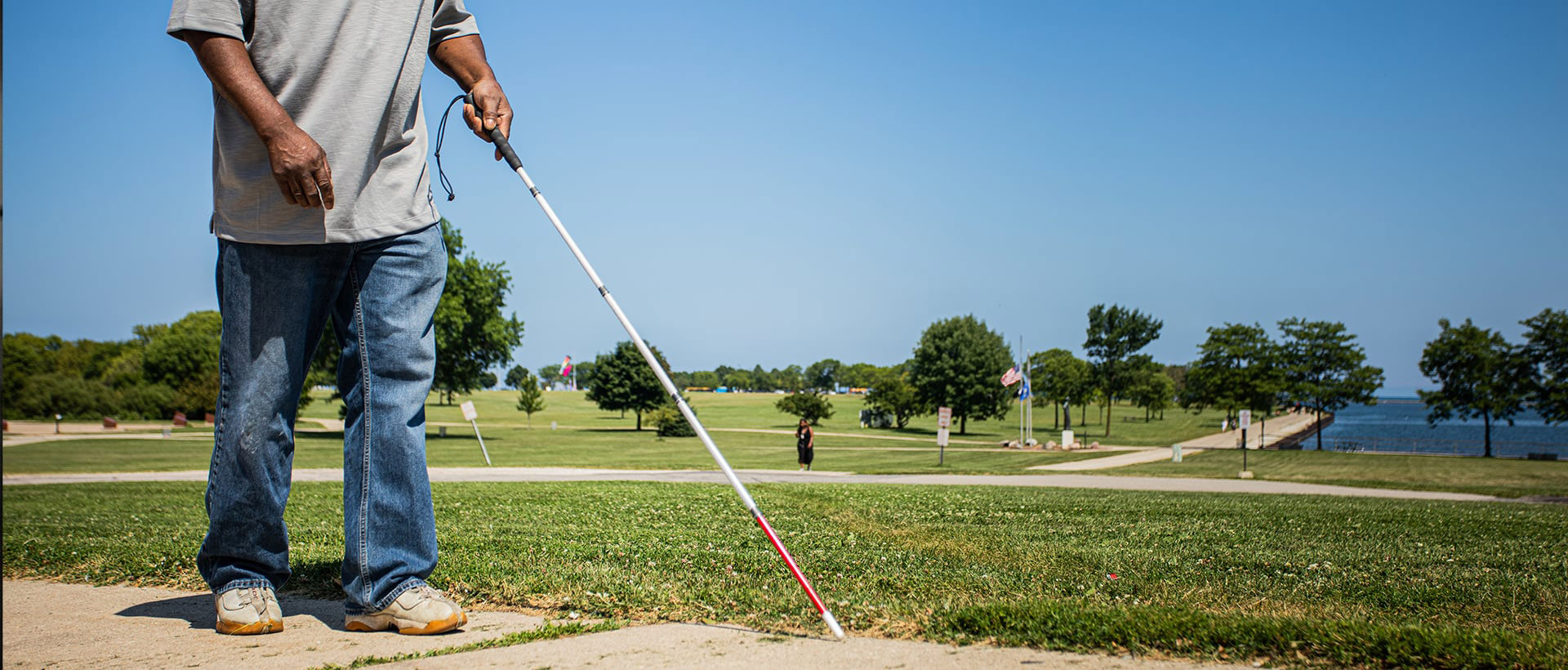Not everyone who is blind or visually impaired uses the traditional white cane to help them get around, but everyone with vision issues understands the powerful symbol of independence it represents.
That’s why we at Industries for the Blind, Inc. – Milwaukee are proud to join the celebration of White Cane Safety Day on October 15, a national commemoration created by a joint resolution of Congress and signed into law by President Lyndon B. Johnson in 1964.
The resolution was designed to honor the many achievements of blind and visually impaired Americans while recognizing the role the white cane has played in advancing their independence.
“October 15 is always a time of pride for me,” Danielle Creapeau, the social media coordinator at IB Milwaukee, told me. “It’s empowering to the younger kids that there is national celebration of this day and that we are proud of it.”

Use of the white cane by the blind and visually impaired is traced to England and France in the 1920s and 1930s, when increasing vehicular traffic began creating problems for those who used a cane to navigate. The cane was painted white to make it easier for others to see.
The Lions Clubs International is credited with championing the use of the white canes in North America, after a club member observed a blind man trying to cross a busy street using a black cane. In 1931, the club began a nationwide effort to promote the use of white canes.
Today, White Cane Safety Day continues to bring together the blind and visually impaired in different ways. In some communities, there will be marches or walks through the town, while in others there may be informational booths set up to explain the history and symbolism of the cane. In Milwaukee last year, the blind community used social media to stage a “flash mob.”
Danielle says that while White Cane Safety Day plays a valuable role in raising the profile of those with vision issues, she still feels the blind and visually impaired face an uphill battle in being accepted as equals.
“It’s a little sad that we are in an age of amazing technology that allows us to do so much, but blind people still have to show what we can do?” she says. “I wish people would see that we are just like everyone else.”
We certainly believe in the abilities of our blind professionals at IB Milwaukee. They reward our faith in them every day in every area of our company with their talent and hard work. They’re the reason we work so diligently to create employment opportunities with clear pathways to upward mobility.
Says Danielle, “I look forward to a day when blind people are not considered amazing for walking across the street. We can do whatever anyone else can do. I hope at some point, people just forget the blindness and that our personalities and abilities outshine that.”
We agree with Danielle, but until that day arrives, White Cane Safety Day is one way the blind and visually impaired can make the case for their freedom and independence to the sighted community.


